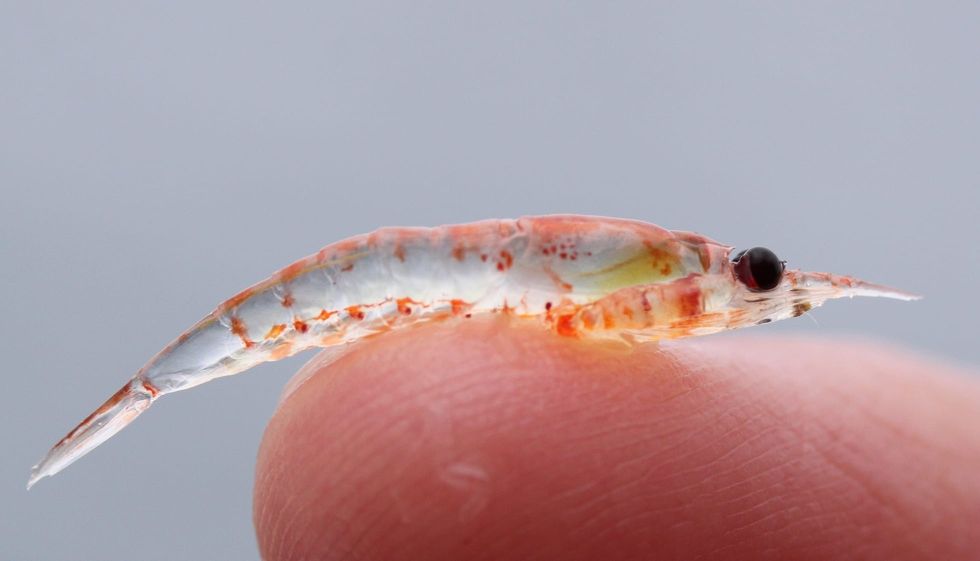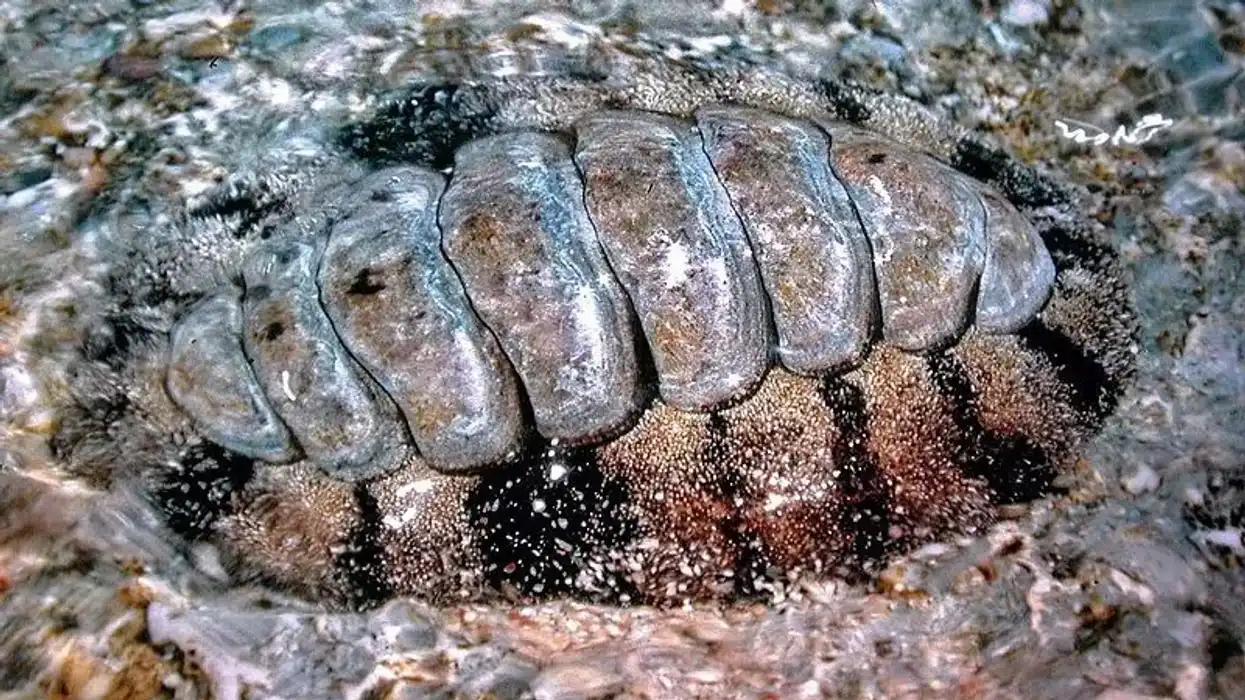We have an intuitive sense of the animals that live on land, but the lives that live in water are much less known to us.
In this article we will learn about the Krill which is responsible for the balance of the aquatic ecosystem to a large degree. The Krill is a crustacean that resembles a shrimp and belongs to the order Euphausiacea.
They play a vital role in connecting the food chain as an intermediary between the bottom of the chain (phytoplankton) to the top of the chain (animals like the blue whale).
There are 85 known Krill species. This marine animal is fascinating and criminally unknown for how critical they are to the health of our oceans.
Due to climate change, as ice melts and raises the level of water, krill population, although still abundant, is likely to be negatively impacted, especially near Antarctica where the Antarctic krill lives. The Antarctic Krill fishing is a booming industry that does not help the cause of keeping this creature's population stable.
Educate yourself on the life that live in water by reading these Krill fish facts.
If you find yourself enjoying this article, consider checking out shrimp and the blue whale!
Krill Interesting Facts
What type of animals are krill?
Krill are small crustaceans that belong to the order of Euphausiacea. Crustaceans is a large subphylum under Arthropoda that includes animals such as Crabs, Shrimps, Crayfish. Prawns and of course, Krills.
What class of animal do krill belong to?
The class that the krill belongs is Malacostraca. This class is in fact the largest class of the subphylum crustacea with over 40,000 species.
How much krill is there in the world?
There are a lot of krill in the world. The Antarctic krill (scientific name: Euphausia superba) itself has a collective mass estimated between 125 million and 6 billion tonnes.
Thus, needless to say, the number of krill is unknown because of their sheer magnitude. In fact, the krill happens to be one of the most abundant species that make it among those species that have the largest total biomass. Not bad for the humble krill which itself has a weight of about 0.071 oz.
Where do krill live?
Krill can be found in every ocean in the world. While some types of krill are confined to specific geographic locations, others such as the Bentheuphausia amblyopes have a cosmopolitan distribution implying that they can be found in various regions in the world.
Even when it comes to the depth of the sea, there is a huge variance, some types of krill live closer to the coast in shallower water toward the surface while others are found in the deep sea.
What is krill's habitat?
Krill are pelagic which means that they live in open water. Krill's habitat in the ocean waters also has a lot of diversity.
For example, the larval krill lives under the sea ice of the Southern ocean, the Antarctic krill can live at depths of 330 ft and the ice krill can live at depths of 13,000 ft. Krill habitats facts paint a picture that shows the diversity of this animal.
Who do krill live with?
Krill in massive schools are called swarms. These swarms vary in size and density depending on the species.
For instance, the Antarctic krill lives in swarms that can have between 10,000-60,000 individuals for every cubic meter. Living in swarms can have its benefits in serving as a form of defense against predators that may get confused in trying to pick out the individual.
How long do krill live?
A krill's lifespan is often a function of the latitude that they live in. The tropical species (Nyctiphanes simplex) have the shortest lifespan of only six months, the mid-latitude host species (eg. Euphausia pacifica) that can survive for about two years and high-latitude species (eg. Euphausia superba) can live for over six years.
How do they reproduce?
When it is mating season, the male krill will deposit sperm sacks at the genital opening of the female. There are two kinds of spawning mechanisms for the krill.
Some krill are 'broadcast spawners' which means the female krill will release fertilized eggs in the open ocean waters.
Other krill are 'sac spawners' which means the females carry their eggs attached to their thoracopods. Krill reproduce prolifically, the female krill will carry and lay thousands of eggs in one go and may brood many times over in a single season.
What is their conservation status?
Krill is one of the most widespread and populous creatures in the world, with an estimated combined biomass exceeding that of all humans on the planet. Thus, krill are by no means close to extinction, but the decline in their population is alarming.
The population of the Antarctic krill has seen 80% reduction since the '70s. This is bad news for the Southern Ocean system which can have impacts on even bigger sea creatures like the baleen and blue whale. Humans have been increasingly harvesting krill for their oil.
Krill Fun Facts
What do krill look like?

Krill are shrimp-like crustaceans that are small in size(0.4-0.8 inches in length). They have two pairs of antennae, and nine mouthparts. They have five pairs of swimming legs (swimmerets) and around six pairs of legs to handle food. Krill are generally semi-transparent but there are exceptions like the Antarctic krill Euphausia superba that is pink and opaque.
How cute are they?
With little recognizable facial features and an almost alien like appearance the krill, unfortunately, isn't a very cute animal despite their size.
How do they communicate?
It may feel unbelievable seeing the coordination and harmony of swarms of krill that they hardly communicate with each other. Interestingly the fact that krill are bioluminescent (Bentheuphausia amblyops) may serve as mating call or social interaction. This question is yet to be fully answered and needs further research from marine biologists.
How big are krill?
Krill are really small species in size. Their size can vary depending on the species but generally they grow to about 0.4 to 0.8 inches in length. Some of the larger types of krill can grow as long as 2.4-5.9 inches. Despite their small size, they can even be seen from space when they gather in dense swarms.
How fast can krill move?
Krill can swim at relatively slower speeds ranging from 120-240 inches per minute. The krill use their legs called 'swimmerets' for propulsion.
How much do krill weigh?
Being small creatures, the krill have a weight of around 0.071 oz. Despite their small size, they play a big role in the ocean ecosystem.
Krill is the most reliable source of food for many large sea predators. Whales, leopard seals, dolphins, fish, and even penguins feed on krill. Krill plays a key role in the food chain of the ocean as they feed on phytoplankton but also are fed by much larger ocean life.
What are their male and female names of the species?
The male and female krill do not have any unique names based on their sex.
What would you call baby krill?
A baby krill does not any unique name based on its age.
What do they eat?
The krill diet is generally that of an omnivore but relying more heavily on plants. They mostly feed on phytoplankton (microscopic algae) and to a lesser degree feed on zooplankton. There are some species like the Antarctic krill which is largely herbivorous while there are other that are carnivorous exclusively.
Are they important?
Krill play an absolutely critical role in the aquatic food chain. They are an essential food source to many predators such as penguins, baleen and blue whales.
Their daily movement vertically in the oceans essentially serves as a mechanism to transport nutrients from the depths of the sea to the surface. Apart from their known importance in being a key element of the food chain, krill also have a positive impact on climate change.
The Antarctic Krill has carbon emissions of about 15 million tonnes each year.
Would they make a good pet?
Krill would make an odd choice for a pet. It is best to let them be in the ocean where they belong.
Did you know...
Krill can assemble in swarms so dense and large in the Southern Ocean (encircling Antarctica) that they can actually be seen from space. Closer to the surface these swarms can give the waters a beautiful pink hue appearance.
Are shrimp and krill the same thing?
No, the shrimp and the krill are distinct separate species. The main difference when comparing the krill vs shrimp is segmentation of their body. While the krill's body is segmented into three parts(Cephalon, thorax, and abdomen) the shrimp's is divided in two (cephalothorax and abdomen).
Shrimps happen to be bigger in size (up to 12 inches) compared to the krill. Shrimps have two pairs of antennae while the krill has just one. Shrimps can live only about two - 10 years and krill can live up to 10 years.
What do humans use krill for?
The krill fishing industry is a lucrative business as humans have many uses for it. Krill are often used as feed for aquarium animals and also as bait when fishing.
In the supplement industry, much like the fish oil capsules, krill oil is a popular product rich in Omega 3. Krill oil benefits can be as profound as helping maintain healthy heart and brain function.
Although some cultures eat krill, it is still not as widely consumed as shrimp. Perhaps it is not much of use to humans, the krill is best for their place in keeping some of the most beloved marine animals well fed.
Here at Kidadl, we have carefully created lots of interesting family-friendly animal facts for everyone to discover! Learn more about some other arthropods including the hermit crab and the house centipede.
You can even occupy yourself at home by drawing one on our Krill coloring pages.










